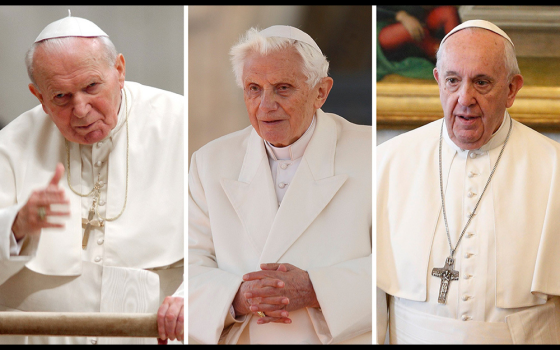Foes of media consolidation, which include the U.S. Conference of Catholic Bishops, seem to have a friend now in the Federal Communications Commission.
The FCC on Thursday took the first step in a process that could limit the number of TV stations one company can own, by treating TV stations equally.
The current ownership limit is not a number, but a percentage. One ownership group can own stations covering 39 percent of the U.S. population, but no more.
However, the FCC has for decades counted UHF stations -- channels 14 and above -- at only half the rate as VHF stations.
In TV's pioneer days, the only channels were channels 2-13; VHF stands for very high frequency. Then the FCC opened up the UHF, or ultra high frequency, band. These were channels 14-83, and later 14-69 as the FCC found alternate uses for that bandwidth.
When UHF came into being, the three major networks had pretty much found all the affiliates they needed on the VHF band. TV owners needed a special set-top box in order to pull in UHF stations, which were largely PBS affiliates or independent stations showing old movies and reruns. This was an early justification for counting UHF stations as half those of VHF stations, known in the industry as the UHF discount.
However, as the technology improved, so did the competition. The Fox network signed up UHF affiliates, as did the WB and UPN networks (since merged into the CW). Spanish-language networks Telemundo and Univision also snapped up hitherto independent UHF stations as affiliates.
Meanwhile, Congress loosened the ownership limits for TV and radio, sometimes in little bites and sometimes in big gulps, which is how the ownership cap grew from 12 stations to 39 percent of the country. At times, Congress nudged the limit upward as an ownership group was already bumping up against the cap.
Now, some companies, seeing the big revenue generated by campaign ads -- especially in an era in which some campaign finance regulations have fallen by the wayside -- want to gobble up more stations. Gannett, which made its name as the largest newspaper chain in the United States, purchased all of the TV assets of Belo earlier this year as part of a go-big-or-go-home strategy. Sinclair Broadcasting, which owns more stations than anyone else -- from 62 in 2004 to 162 should all of its proposed purchases go through -- has banked on the UHF discount for its growth; only 29 of its stations are on the VHF band.
Meanwhile, with the transition four years ago from analog to digital TV, not only is the technological inferiority of the UHF signal gone, but some contend the VHF channels' digital signal is weaker than their UHF counterparts, leading the FCC to ask in its proceeding whether it should instead consider a VHF discount.
The FCC proposal would grandfather in ownership groups that would be above the 39 percent limit, but it would thwart their further consolidation plans.
There will still be loopholes for station groups to get around this, if the FCC regulation passes. Two companies can enter into a local marketing agreement, in which one company in effect leases a station from the other station's licensee. Shared service agreements can also come into play, as when one station produces and airs a separate newscast for a second station in the same market -- or, if the owners are cheap, just rerun the original newscast on the other station.
But curbing the rampant growth of ownership concentration will give the TV station market a needed cooldown. Ownership groups will be less likely to squash down costs, or squeeze out profits, to cover the inflated costs of ownership. That in turn gives breathing room for stations to do what the FCC licenses them to do in the first place: provide a service to the public.
[Mark Pattison is media editor for Catholic News Service.]


